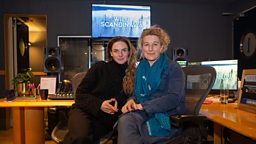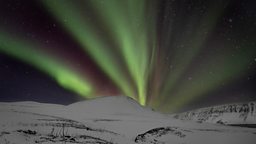Friluftsliv: Embracing the Scandinavian outdoors
By Billy Clapham, assistant producer for Wild Scandinavia
‘Friluftsliv’ - open air living
The Scandinavians are known for their prosperity, beautiful design and liberal democracies, but perhaps most of all- their happiness.
So much so, that the simple Danish word ‘hygge’ has become a global phenomenon in recent years. Roughly translated as a feeling of comfort and wellbeing, the rest of the world strived to emulate that certain Scandinavian-ness. You would be foolish for pinning a nation’s happiness on one word. But for many Scandinavians, happiness is not centred around hot chocolates, warm socks and scented candles. Instead, it’s a Norwegian word that comes to mind: ‘Friluftsliv’ - open air living
Facing the biting cold, being immersed in spectacular nature and literally throwing yourself into Scandinavia’s extremes, is what friluftsliv is all about. An invigorating concept we explored with locals in ‘Wild Scandinavia’.
Embracing the freeze
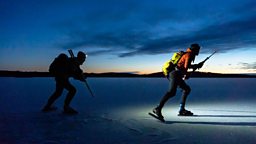
Winters in Scandinavia can last for 5 months- with some regions not seeing the sun for weeks on end. While the hygge fans may be tempted to never leave the fireside, Oskar Karlin relishes winter. For winter’s cold brings endless adventure. Setting out on the bus from his city centre flat in Stockholm, he uses weather forecasts, live satellite images and specially designed maps- that he’s made himself- to find the holy grail of Nordic ice skating - ‘Black ice’.
‘Lagom’ - not too much, not too little- just right (Swedish)
Named for its often dark appearance, ‘black ice’ is the name for brand new, unspoilt and super-thin ice, which has a distinct sound as it bends under the weight of a moving skater.
Oskar recalls: ‘ The sound from the ice when it’s quite thin sounds very strange. Almost like laser beams. It’s the sound from another world…it’s almost like watching the Northern Lights, but with your ears.’
Too thin and the ice will break, but too thick and the ice will become old, bumpy and of poor condition. Only 3.2cm thick, is just right.
Oskar will skate up to 100km a day on this glorious yet precarious platform. It’s a fine balance - something the Swede’s have just the word for: ‘Lagom’ - not too much, not too little- just right (Swedish)

For Oskar, skating brings such evocative rewards, he keeps returning to the ice.
‘Sometimes when there’s a little bit of water on the ice, it feels like, you’re skating in the sky, because the reflections are incredible!‘
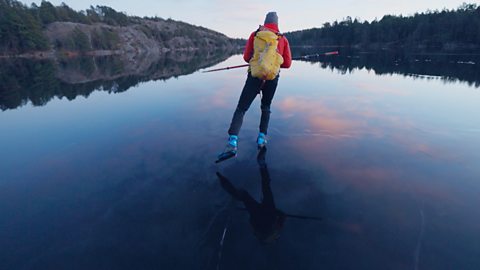
Skating on thin ice
The sounds generated by skating over black ice are out of this world.
Natural highs
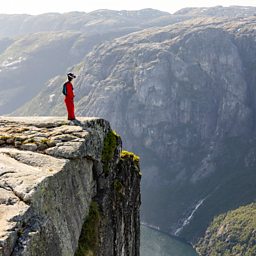
Norway has the greatest concentration of fjords in the world- twisting ocean canyons with sheer cliffs rising up to a thousand metres. Hege Ringard is not satisfied with simply hiking to the top, for her, real happiness comes with total immersion - just one small step off the edge. Her preparation is simple:
‘I clap… My body and my brain is working together, and the clap is like a little wake up thing… and then I jump.’
Hege is a base-jumper and wingsuiter, part of the thriving community of base-jumpers who take full advantage of the fjord landscapes and explore new jumps every year. Weather forecasts can tell her a lot about what conditions to expect, but she’ll also watch how the winds affect the torrential waterfalls, to double check it’s a good day for jumping. Freefalling down the cliffs she describes the feeling:
Slowly the wings will fill up with air, it’s like this soft, sweet motion. It doesn’t feel that fast actually…It’s like an enjoy the view kind of thing… and get off the mountain.
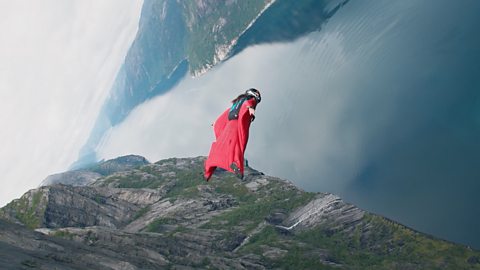
Hege Ringard's extreme friluftsliv
Hege Ringard embraces her Viking spirit by base-jumping in a wingsuit off fjords.
Natural Livelihood
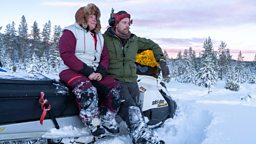
Sápmi- the ancestral territory of the indigenous Sami people
For Margret Fjellstrom and Daniel Viklund, friluftsliv is not a past-time, it is their way of life. The northern parts of Norway, Sweden, Finland and nearby Russia, make up Sápmi- the ancestral territory of the indigenous Sami people. Beginning centuries ago, reindeer herding is still how many Sami make a living today. All year round Margret and her family guide their reindeer to the best grazing grounds. For them, riding roaring snowmobiles through metre thick snow in temperatures plummeting below -30C is just another day on the job.
'When I see the reindeer, it’s grazing outside and it’s good condition, it’s like a big love story. You get all tickly in the body and you’re smiling. It’s the best feeling. You know, when you’re in love, really in love that’s the feeling.'
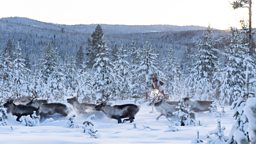
It’s increasing warmth that is actually making Margret’s life harder.
'You can have 3 seasons in one month. That’s never happened when I was growing up.
The skills that I learn from my father about the weather is not working any more.
With the new weather and the climate change it’s really really hard to predict where should we go for the best grazing on the lichens this year.'
Winters are becoming less predictable, with periods of warmer weather and rain locking the reindeers favourite food under solid impenetrable ice. Unstable snow conditions also make travelling by skidoo harder- but Margret and her family have added a new tool to their arsenal: drones. When skidoos lose the herd, a drone can easily catch them up above the tree tops. Broadcasted from the drones inbuilt speaker, sounds of dogs, cars and sirens are all used to help get the herd back on track. But apparently it’s the scream of a tasmanian devil that really gets a reindeer going.
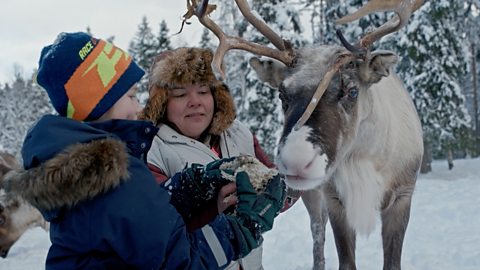
The deep relationship of the Sami and reindeer
Margret Fjellström and her reindeer depend on dwindling lichen-rich forests for survival.
While Hege and Magret may live out their Frilutzliv in the extreme, many more Scandinavians express their Allemansrätten – Everyman’s right... to roam.
Allemansrätten – Everyman’s right
With the exception of private gardens, all Scandinavians have the right to explore their wilderness enshrined in law. In Autumn families forage for abundant mushrooms, with the bright yellow chanterelles a firm favourite, but the best spots are tightly guarded secrets.
Finding Freedom
Strapping a ski to both feet and towing a heavy sled of emergency supplies and safety gear is a normal weekend to Brynhildur, Thorey and Birna. Home to less than 375,000 people, the island of Iceland, has plenty of wilderness to wander through.
Bryn: 'I really love bad weather, there’s something healing in it… it’s just you against the elements. It’s great.'
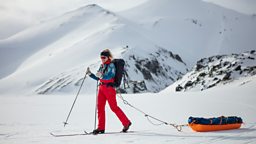
But Brynhildur and her friends have a clear aim on their back-country adventure. Making the most of Iceland’s volcanic forces - they head for the country's famous hot springs.
Birna: 'You’re a bit tired after the challenge during the day, and it is the most amazing feeling.'
Bathing in geothermal pools is a national pastime for Icelanders – and as a working mum, it’s a place for Brynhildur and her friends to relax, connect with nature and each other. Perhaps this is perfect happiness - a little bit of outdoor hygge in the Scandinavian wilderness.
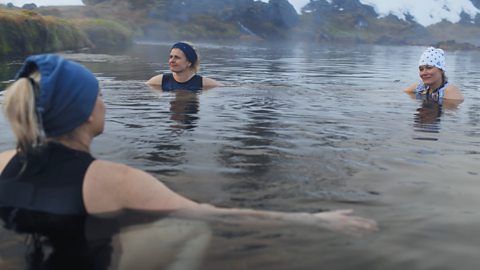
Icelandic skiers venture to a remote thermal spa
Three women take on the elements over a long weekend of backcountry skiing.
